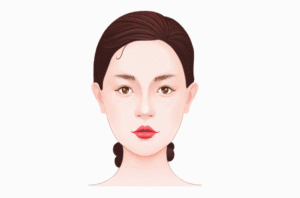Eyebrow tattooing is a cosmetic procedure that involves first drawing the desired brow shape based on the original brows, then using an eyebrow tattooing device to implant the appropriate color into the skin’s surface, creating a new brow. Patients can customize the pigment to match their hair color, creating a smooth, contoured brow shape that resembles a natural, drawn brow. Eyebrow tattooing includes a variety of methods, including semi-permanent, simulated, natural, and 3D. Patients can choose the right one based on their needs and eyebrow condition. This article uses semi-permanent tattooing as an example.
Applicable people
Eyebrow tattooing is suitable for those with poorly shaped or incomplete eyebrows. It can also be performed by those who don’t know how to apply makeup, don’t have the time, or have professional or cosmetic needs.
Taboo groups
1. Those with lesions such as hemangioma, sebaceous cyst, seborrheic dermatitis, recent trauma, or skin damage such as furuncle, folliculitis, rash, etc. in the eyebrow area.
2. People with diabetes, heart disease or injuries that are difficult to recover from.
3. Those with excessive white blood cells, insufficient platelets, and prolonged coagulation time.
4. People with scar-prone constitution, allergic constitution or allergies to pigments and other products.
5. Those who are mentally ill or have excessively high expectations.
6. People with facial nerve paralysis.
7. People with congenital or acquired ptosis.
8. Women who are menstruating, pregnant or breastfeeding.
9. Those who are hesitant about eyebrow tattooing and whose relatives disagree.
Technical/surgical risks
1. Pigment allergy: Symptoms include localized redness, swelling, itching, blanching, peeling, bloody exudate, and even the tattooed area being elevated above normal skin tissue. In this case, patients can follow their doctor’s advice and apply a dexamethasone-based solution to the affected area, followed by a topical application of gentamicin, or take oral anti-allergic medication. After the redness and swelling subside, laser tattoo removal or electroacupuncture can be performed to remove the allergen.
2. Local infection: manifested as eyebrow folliculitis, local redness, swelling, pain, small pus spots, etc. At this time, the patient can clean the infected area with normal saline or liquid medicine, apply anti-inflammatory drugs externally, and take systemic antibiotics if necessary.
3. Cross infection: Pathogens can be transmitted between different individuals through blood, exudate, etc. Therefore, it is recommended that one person has one needle, and eyebrow tattooing equipment should be strictly disinfected to avoid this situation.
4. Unsatisfactory eyebrow shape: This can be manifested as poor eyebrow shape, uneven eyebrow color, or asymmetry. Depending on the specific situation, laser eyebrow removal or surgical removal may be considered. Consult a doctor if necessary and have another eyebrow tattoo adjusted after 3 to 6 months.
Postoperative care
After eyebrow tattooing, you should pay attention to local care, medication management, diet conditioning and lifestyle behavior management.
1. Local care: Keep the wound clean within 3 days after eyebrow tattooing and avoid getting it wet; the scab should be allowed to fall off on its own and should not be picked off manually. It should also not be exposed to hot water or steam to prevent the scab from softening and falling off.
2. Drug management: Apply anti-inflammatory drugs on the wound, such as chloramphenicol eye ointment, to prevent infection.
3. Diet adjustment: No smoking, alcohol, spicy food or seafood.
4. Lifestyle management: Avoid swimming, sauna, exercise and other activities that will cause sweating, so as not to interfere with coloring; after the effect is formed, if you want to make some minor adjustments, you can propose it when retouching.
Preoperative precautions
1. Communicate with the doctor before treatment to understand the specific process of eyebrow tattooing, related risks, possible surgical effects, etc., and be mentally prepared.
2. Keep a light diet one week before eyebrow tattoo, and avoid smoking, drinking, and spicy food.
3. Avoid menstruation, pregnancy and lactation periods.
4. Do not wear makeup before eyebrow tattooing and keep your face clean.
Surgical procedure
Eyebrow tattooing includes several methods such as semi-permanent eyebrow tattooing, simulated eyebrow tattooing, natural eyebrow tattooing, and three-dimensional eyebrow tattooing. Here we take semi-permanent eyebrow tattooing as an example. The operation process mainly includes eyebrow trimming and drawing, surface anesthesia, and eyebrow tattooing.

